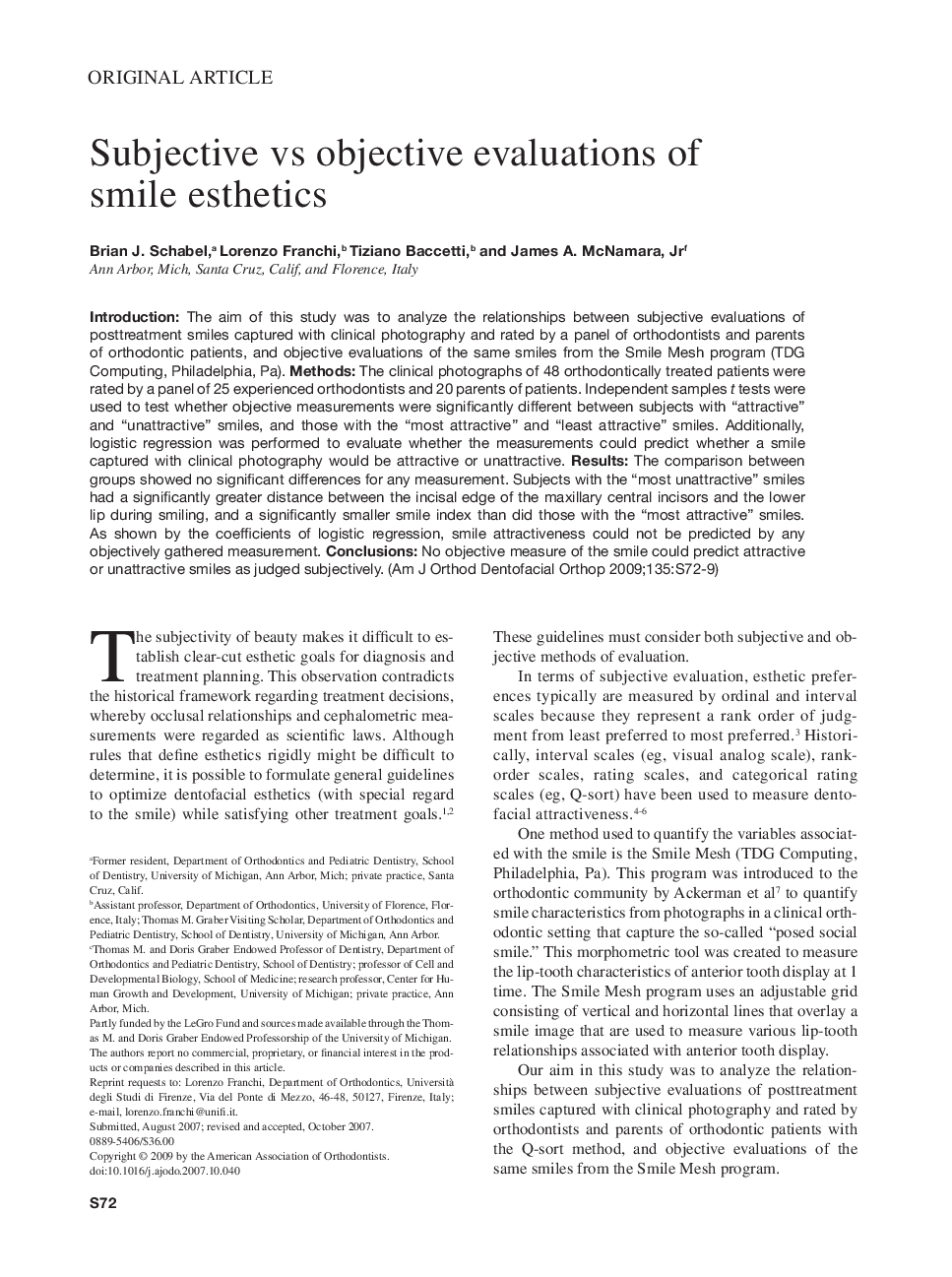| Article ID | Journal | Published Year | Pages | File Type |
|---|---|---|---|---|
| 3120033 | American Journal of Orthodontics and Dentofacial Orthopedics | 2009 | 8 Pages |
IntroductionThe aim of this study was to analyze the relationships between subjective evaluations of posttreatment smiles captured with clinical photography and rated by a panel of orthodontists and parents of orthodontic patients, and objective evaluations of the same smiles from the Smile Mesh program (TDG Computing, Philadelphia, Pa).MethodsThe clinical photographs of 48 orthodontically treated patients were rated by a panel of 25 experienced orthodontists and 20 parents of patients. Independent samples t tests were used to test whether objective measurements were significantly different between subjects with “attractive” and “unattractive” smiles, and those with the “most attractive” and “least attractive” smiles. Additionally, logistic regression was performed to evaluate whether the measurements could predict whether a smile captured with clinical photography would be attractive or unattractive.ResultsThe comparison between groups showed no significant differences for any measurement. Subjects with the “most unattractive” smiles had a significantly greater distance between the incisal edge of the maxillary central incisors and the lower lip during smiling, and a significantly smaller smile index than did those with the “most attractive” smiles. As shown by the coefficients of logistic regression, smile attractiveness could not be predicted by any objectively gathered measurement.ConclusionsNo objective measure of the smile could predict attractive or unattractive smiles as judged subjectively.
